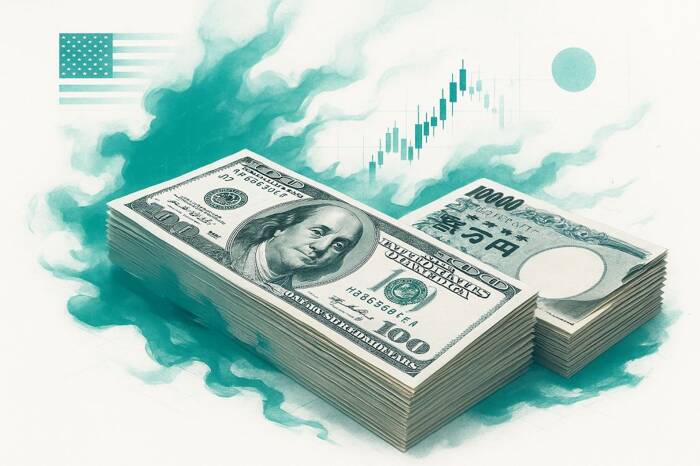Weaker-than-expected exports could reflect the effect of US tariffs on demand for Japanese goods. Falling external demand could impact the economy and delay BoJ rate hikes, affecting Yen appetite.
On the other hand, an unexpected upswing in exports may ease concerns about tariffs affecting Japan’s economy. Under this scenario, the BoJ may indicate a more hawkish policy stance.
In Q2, Japan’s economy expanded 0.3% quarter-on-quarter after growing 0.1% in the previous quarter. Notably, external demand rose 0.3% after falling 0.8% in the first quarter, contributing to a higher GDP reading.
Japan Services PMI: A Key Sector for the BoJ and Monetary Policy
On Thursday, August 21, Japan’s S&P Global Services PMI will influence the BoJ rate path. Economists expect the PMI to drop from 53.6 in July to 52.8 in August. Given the sector’s significance, a weaker PMI print could temper bets on further monetary policy tightening. However, a higher reading may fuel speculation about a Q4 rate hike and drive Yen demand.
Beyond the headline PMI, traders should also consider price trends. Wage growth and selling prices could give the BoJ clues on potential consumer price trends.
National Inflation in the Spotlight
Inflation numbers round off a crucial week. Economists expect the headline and the core-core inflation rates to remain at 3.3% and 3.4%, respectively, in July. Higher readings support the BoJ hawks and a Q4 rate hike. Conversely, softer-than-expected core-core inflation may delay a BoJ policy move until early 2026.
USD/JPY Outlook: Economic Indicators and the BoJ
Bullish Yen Scenario: Strong Japanese data or hawkish BoJ policy rhetoric could drag USD/JPY toward 145.
Bearish Yen Scenario: Weaker Japanese data or dovish BoJ cues may send the pair toward 150.
US Services PMI, Labor Market Data, and the Jackson Hole Symposium in Focus
In the US, the Fed, crucial Services PMI, and labor market data will influence investor sentiment toward the Fed rate path.
Key events include:
S&P Global Services PMI (August 21): Forecast to fall from 55.7 in July to 53.3 in August.
Initial Jobless Claims (August 21): Expected to rise from 224k (week ending August 9) to 227k (August 16).
Jackson Hole Symposium (August 21-22).
Fed Chair Powell Speech (August 22).
Weaker-than-expected services sector and labor market data could boost expectations of multiple Fed rate cuts. A more dovish Fed rate stance would weigh on US Dollar demand and USD/JPY. However, a pickup in services sector activity and a resilient labor market may allow the Fed to take a less dovish policy stance. Fading expectations of multiple interest rate cuts would likely drive USD/JPY higher on stronger US dollar demand.
While the stats require consideration, speeches from the Jackson Hole Symposium and Fed Chair Powell’s speech will be key. Following a sharp rise in producer prices and higher import prices in July, remarks on inflation, the labor market, and the timeline for rate cuts will influence the pair’s near-term outlook.
Potential Price Scenarios:
Bullish US Dollar Scenario: Upbeat US data or hawkish Fed commentary may drive USD/JPY toward the 149.358 resistance level and the 150 mark.
Bearish US Dollar Scenario: Weaker US data or dovish Fed rhetoric may drag USD/JPY toward the 145 support level.
Short-term Forecast:
USD/JPY’s near-term outlook will hinge on key economic data and central bank policy guidance. Expectations of monetary policy divergence could weigh heavily on the USD/JPY pair.
USD/JPY Price Action
Daily Chart
On the daily chart, the USD/JPY remains above its 50-day Exponential Moving Average (EMA) but below the 200-day EMA. The EMAs indicate a bullish near-term but bearish longer-term bias.
A breakout above the 200-day EMA could pave the way toward the 149.458 resistance level. A sustained move through 149.458 may allow the bulls to target the August 1 high of 150.917.
On the downside, a drop below the 50-day EMA opens the door to testing the crucial 145 support level. If breached, the 142.5 mark would be the next key support level.


AloJapan.com